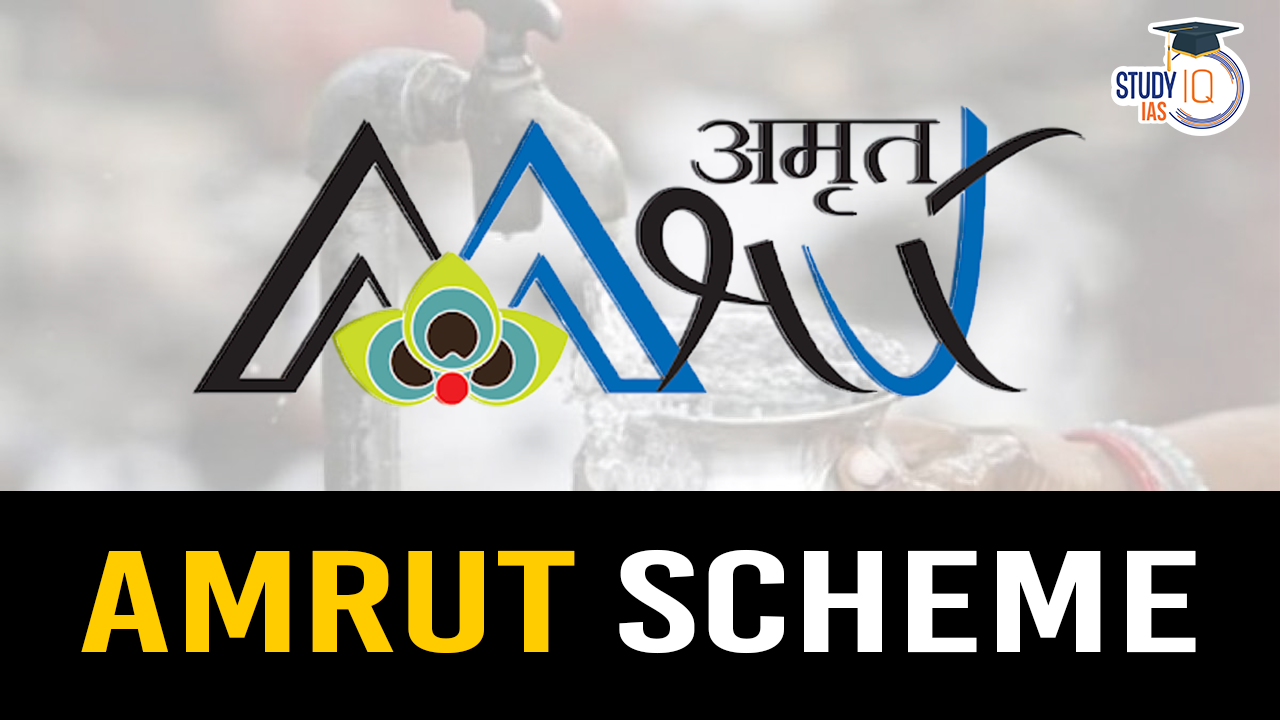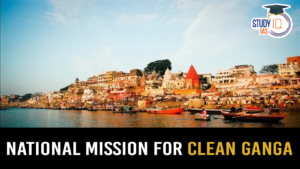Table of Contents
Context: The Atal Mission for Rejuvenation and Urban Transformation (AMRUT) is a flagship government initiative aimed at improving urban infrastructure in India. Commissioning of projects in AMRUT mission under 100-day agenda of Union Government
100 Day Agenda of AMRUT Mission
- Under the 100-day agenda, cities also aim to establish sewage treatment plants (STPs) with a total capacity of 500 million litres daily (MLD) that would benefit around 6 lakh households and 150 MLD water treatment plants for 2 lakh households.
- It includes approval of long-pending proposals, including notification of the Delhi Master Plan 2041 and the incubation of eight greenfield cities to Rs 1,000 crore each in the country, as the 15th Finance Commission recommended.
| Facts |
|
AMRUT Scheme
AMRUT Scheme was launched in 2015 to provide basic civic amenities like water supply, sewerage, urban transport, and improve the quality of life for all, especially the poor and the disadvantaged.
- Purpose: The AMRUT scheme was launched to enhance the quality of life in urban areas by addressing critical infrastructure needs.
- Key Objectives:
- Ensure access to tap water and sewerage connections for all households.
- Develop green spaces and parks in cities.
- Reduce pollution through public transport and non-motorized transport facilities.
- Make cities water secure and provide functional tap connections in all statutory towns (AMRUT 2.0).
- Achieve 100% sewage management in 500 AMRUT cities (AMRUT 2.0).
- Target: The scheme covers 500 cities and towns with a population exceeding one lakh.
- Financial Outlay: The total outlay for AMRUT is ₹50,000 crore (Phase 1) and ₹2,99,000 crore (Phase 2), with the Central government contributing ₹76,760 crore in Phase 2.
AMRUT 2.0
- The scheme was launched on 01 October 2021 for the period of 5 years, (from 2021-22 to 2025-26).
- AMRUT 2.0 will focus on:
- enhancing sewerage and septic management and making all Indian cities water secure.
- providing 100% coverage of water supply to all households in around 4,700 urban local bodies by providing about 2.68 crore tap connections and
- 100% coverage of sewerage and septage in 500 AMRUT cities by providing around 2.64 crore sewer or septage connections
Implementation Progress of AMRUT Scheme
- Funds Dispersed: As of May 19, 2024, ₹83,357 crore has been dispersed under the scheme.
- Key Achievements:
- 58,66,237 tap connections provided.
- 37,49,467 sewerage connections were established.
- 2,411 parks developed.
- 62,78,571 LED lights were replaced.
Challenges
- Water and Sanitation:
- An estimated 200,000 people die annually due to inadequate water, sanitation, and hygiene.
- India’s disease burden due to unsafe water and sanitation is significantly higher than China’s.
- Untreated wastewater and limited water treatment pose health risks.
- 40% of India’s population may lack access to drinking water by 2030.
- 31% of urban households lack piped water, and 67.3% lack piped sewerage connections.
- Air Pollution: Air quality in AMRUT cities continues to deteriorate, necessitating the launch of the National Clean Air Programme in 2019.
What Went Wrong?
- Flawed Design: The scheme adopted a project-oriented approach instead of a holistic one.
- Lack of Participation: Cities had limited involvement in the planning and implementation process.
- Top-Down Approach: Bureaucrats and private entities dominated decision-making, sidelining people’s representatives.
- Misaligned Priorities: Real estate development often took precedence over sustainable urban planning.
- Neglect of Local Context: Water management failed to consider climate, rainfall patterns, and existing infrastructure.
Way Forward
- Nature-Based Solutions: Incorporate natural solutions like rainwater harvesting and green infrastructure.
- Comprehensive Approach: Address water, sanitation, air pollution, and other urban challenges holistically.
- People-Centric Approach: Empower local communities and elected representatives in decision-making.
- Sustainable Urban Planning: Prioritise long-term sustainability and resilience over short-term gains.


 National Mission for Clean Ganga (NMCG)
National Mission for Clean Ganga (NMCG)
 UDAN Scheme, Objectives, Funding and Ach...
UDAN Scheme, Objectives, Funding and Ach...
 5 Years of SVAMITVA Scheme and Its Benef...
5 Years of SVAMITVA Scheme and Its Benef...





















